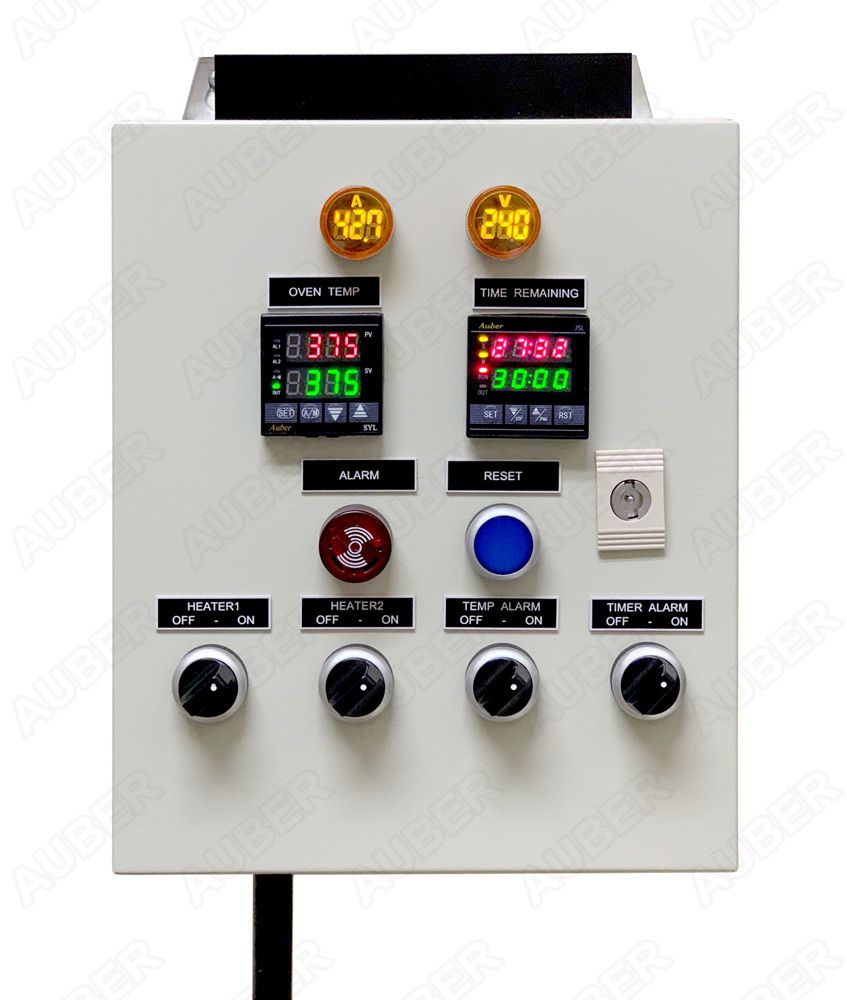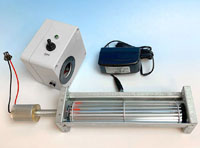Categories
- PID Controllers
- Auto gauges, EGT Boost
- Coffee Machine Kits
- Brew Equipment
- Power Regulators
- Powder Coating Equipment
- Powder Coating Ovens
- Smoker Controllers
- Humidity Controllers
- Plug-n-Play Controllers
- Thermometer, Process Meter
- Temperature Sensors
- SSRs & Contactors
- Timer, Counter, Tachometer
- Pressure Controller
- Controller for Coil Heater Enail
- Enclosures (Boxes)
- Switches
- Punch & Die for Control Panel
- DIN Rail Components
- Connectors
- Accessories
- Control Panels & DIY Kits
- Sous Vide Cooking
- Liquid Dispensing Machine
- Controller For Lab Research
- Silicone Tubing (Platinum Cured)
- Value Packs
- Scratch/Dent/Refurbished
- Services
- Specials ...
- Featured Products ...
- All Products ...
PID Controller (General)
1. Why does the output LED of the PID controller blink?
The blinking is normal. That is how the PID works. If the controller decides 10% is needed to maintain 216 °F, it will be on for 0.2 sec and off for 1.8 sec continuously (0.2 / (0.2 + 1.8) = 10%).
The auto-tune is a process to tune the controller's parameters based on your load/heater and your set temperature. If you have some system control issues, such as overshoot or undershoot, auto-tune typically will help. Please note, auto-tune will not help for your reading issues. For example, if your controller shows jumping around reading, or your reading changes significantly every second, auto-tune function will not help. See section 6 below.
The auto tune will heat the system to the SV, shut heater off to let it drop to below SV (normally not too much lower), then heat again. It will do this three times. If the system takes a long time to cool, the auto-tune will take a long time.
For the relay output controller, output cycle time would be at least 20 sec. It will take longer to auto-tune compared to the SSR output controller, whose output cycle time would be 2 sec.
3. Why I cannot set the cycle time to 1 sec for SSR output?
The controller does not allow it to be set to 1 sec unless it is on/off mode. The reason is that for countries with 50 Hz power, setting the cycle time to 1 sec does not allow the SSR to be fired reliably. For 50 Hz, there are 100 half cycles. Each takes 10 ms. When cycle rate is set to 1s, 1% is a 10 ms pulse. Since most SSR has a zero crossing detection, the SSR might not get triggered for a 1% output when the trigger is issued at the zero crossing voltage. For the 60 Hz, the situation is a little better. Based on these considerations, 2 sec is the best option for precision control.
4. Difference between the PID mode and the ON/OFF mode (Why my output is cycling ON/OFF?)
Majority of Auber's PID controllers have PID control mode and ON/OFF control mode. They operate differently.
PID mode is the control mode by factory default. It uses P, I and D parameters to control the output. Take an example of an electric oven. When your reading temperature is far below your set temperature, your heater will be always ON. When your reading temperature gets close to your target temperature, your heater will keep cycling ON/OFF. By this way, your reading temperature can reach your target temperature with minimum overshoot/undershoot.
ON/OFF mode works similar to a thermostat. When your temperature is low, your heater will be ON; when your temperature is high, your heater will be OFF. You can set a dead band to decide when to turn on or off. No more cycling ON and OFF like PID mode. But by using ON/OFF mode, you will have some overshoot/undershoot. You may need to use hysteresis band parameter to adjust it.
5. How to calibrate a controller?
A simple calibration can be done with an ice water mixture. To calibrate the temperature probe in ice water, you need a ratio of >70% ice and <30% water; equilibrate in a thermos (or stirred beaker) for 10 minutes before reading. If the reading is not 0°C or 32°F, you can offset the controller with parameter "Pb" (SYL-2342, SYL-2352, SYL-4342, SYL-4352), "PSb" (SYL-2362, SYL-1512) or "SC" (WS and WSD series). Both ice and water should be from distilled or purified water. This calibration method is best for applications that are close to the water freezing point. If the sensor is used at very high temperature, it can be calibrated near the application temperature with a NIST traceable sensor. You can also calibrate the sensor in the boiling water. However, that is a little tricky to do. You can easily get a reading 5°F off. You need to find the boiling water temperature at your location first. If you search “Boiling Point of Water Calculator” you will find many of websites that show you how. After calculation, you can use the method discussed in this link.
It is not recommended to that you calibrate the sensor in the air. Because the mass of the sensor, it might take a long time for the sensor to equilibrate with the air, especially when the temperature difference between the sensor and air is very small.
6. Why does my reading jump around fast/unstable?
Here are many possibilites to cause this type of issue:
1). Bad connection between the controller and sensor. 2) Bad sensor/sensor cable 3) System noise picked up the sensor. 4) Bad controller.
Please use a screwdriver to confirm the connection between the controller and your temperature sensor at first. If you have a spare temperature sensor, you can try it with this controller. For PT100/PT1000 RTD sensors, you can use a multimeter to check its resistance to see if it is good or bad. If your sensor and sensor connection are good, this issue might be due to the system noise picked up by the sensor which affects the controller's reading. Please try to keep the sensor cables away from your power cables in your control box. For SYL-2342/SYL-2352 series controllers, please use its digital filter function and see if it helps. Please change parameter FILT to 5 or 6.
7. How to use SYL-2342/SYL-2342P to drive a SSR with an external AC-DC power supply?
SYL-2342/SYL-2342P comes with a dry relay output, which is designed to drive external mechanical contactor/relay directly. It is a dry switch so it cannot drive a SSR. However, if you can use an external AC-DC power adapter, you can still use this controller to drive your SSR. Please find the wiring diagram attached. The power adapter used in this example is 12V DC. Typical SSR input signal range is 3-32V DC. So theoretically, 5V, 9V, 12V, 24V AC-DC power adapters will work.




